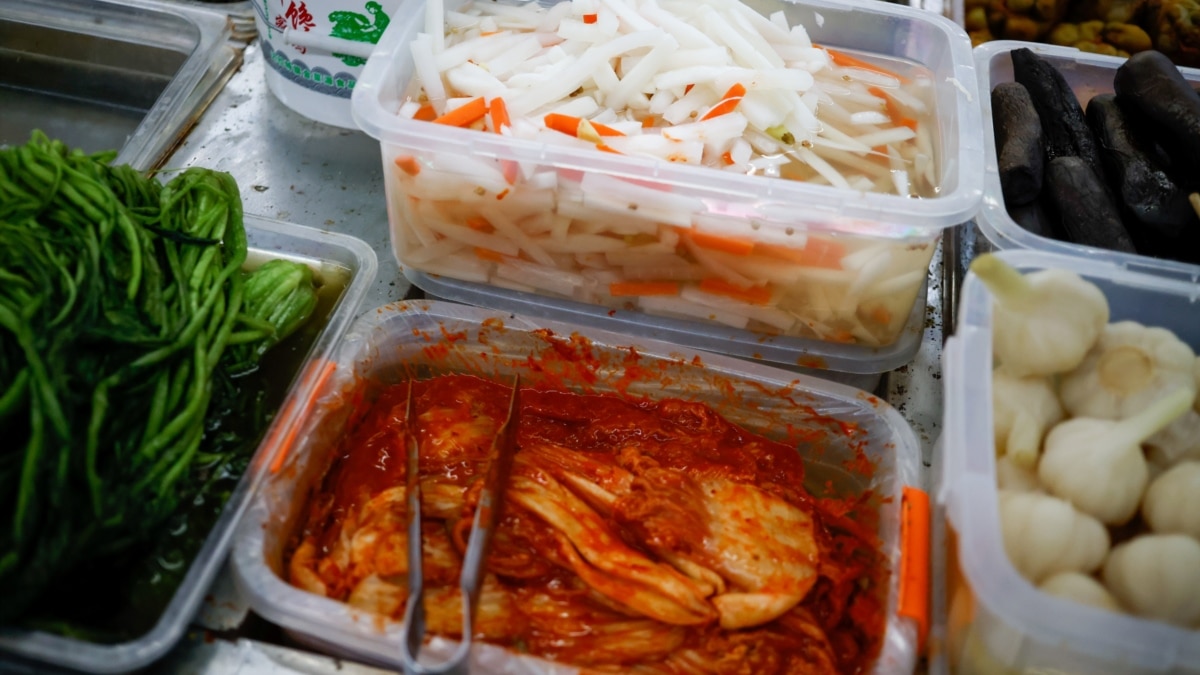The coronavirus health crisis has affected almost every part of daily human life – including what we eat.
Almost a year after social detachment, many people are enjoying food that has long been forgotten or rejected by taste, touch or smell. Some have added healthy foods to the diet to strengthen the body’s natural defenses.
The activity of cooking at home is on the rise everywhere due to restrictions on restaurants and other food stores. People are increasingly exploring new eating experiences in their own kitchens.
The joy of pears
Maeri Ferguson is a 31-year-old woman who lives in Brooklyn, New York. She obtained COVID-19 last year and has recovered. But the disease damaged his taste and smell for months. Many of her favorite foods no longer satisfied her.
Ferguson can again experience sweetness, salinity and spices, although many foods still don’t seem to taste strong – but not pears. The fruit was not part of their pre-COVID diet.
“I knew the taste of a green and bad pear, but not a good one,” she said. Thanks to a gift from a friend, she struggled to find a good example. It was one of the first foods that she was able to really taste again.
“I am totally converted,” said Ferguson. “I will never forget to bite a juicy red pear.”
Fermented foods
Fruits are simple pleasures. But fermented foods have also become popular. Fermented foods last a long time in the refrigerator, which helps if you go shopping less often than before.
Anastasia Sharova, a chef in Stuttgart, Germany, runs Happybellyfish.com. The company is an online cooking school that works with healthy foods. She added fermentation classes in late 2019. Then, the coronavirus crisis arrived.
Suddenly, interest in making kimchi and sauerkraut, two types of fermented cabbage; and miso, fermented soybeans, increased sharply. Previously, Kombucha, a fermented tea, had helped popularize homemade fermented foods.
“Health has become … number one for many in the past year,” said Sharova. She added that being at home has caused many to make culinary discoveries. She said that fermenting things is like a community activity done by families or in online classes.
Alicia Harper, 30, also discovered fermented foods. She is a nutritionist in New York. She didn’t like the strong flavors and smells of fermented foods at first.
“Since I tried again recently, my opinion has completely changed. Now I’ve learned to love the taste and the smell, ”she said.
Anne Alderete, from Los Angeles, California, is now enjoying natto. Made from fermented soy, natto is popular in Japan, but is considered unusual by many people.
“I have smelled it many times since I was half Japanese and lived in Tokyo after college for seven years,” said the 47-year-old. But she never liked to eat natto before COVID-19.
“I feel a little virtuous when I eat natto because the health benefits are many, but also because it brought me closer to my roots ”, said Alderete.
Concerns and comforting foods
Some experts think that the changes in the way we eat also come from having more time to consider information about how food gets to our table.
Ryan Andrews is a nutritionist who wrote a book on herbal foods. Ryan is also a consultant with Precision Nutrition, which trains nutrition coaches. He said that many people are learning painful truths about the food system.
Andrews said: “People have learned about unsafe working conditions in refrigerators, the unfair wages of farm workers.” He added that other problems include “diet-related” illnesses, cruelty to farm animals and the cost of industrialized agriculture. “
At the same time, research firm Semrush studied Google searches related to changes in food interests during the COVID-19 crisis. Their findings suggest comfort food and some unusual combinations are still on people’s minds.
The company found a 17 percent increase in searches for “peanuts and coca” in December compared to December 2019. It found a 33 percent increase for “ham and melon”. And found a 95% jump in searches for “bacon and jelly. “
A service called WoodSpoon uses technology to connect people who cook at home with people willing to pay for a home-cooked meal. The company is headquartered in New York. His boss, Oren Saar, spoke to the Associated Press. He suggested that before the health crisis, there was a strong interest in healthy and less processed foods. Then, orders for bread, pasta and fatty meats increased.
“Inside challenger moments like this, customers look for authentic, homemade food, ”said Saar.
I’m Mario Ritter Jr.
And I’m Ashley Thompson.
Leanne Italie reported this story to the Associated Press. Mario Ritter Jr. adapted it for VOA Learning English. Caty Weaver was the publisher.
_______________________________________________________________
Words in this story
comfort –N. a state or feeling of not being worried, upset or unhappy, free from pain
fermented –Adj. a chemical change in food (and some industrial materials) that alters the nature of food and often preserves it
jelly –N. a sweet and sticky food made with fruits and sugar
challenger –Adj. difficult
authentic –Adj. real, genuine
We want to hear from you. Write to us in the comments section, and visit our Facebook page.


